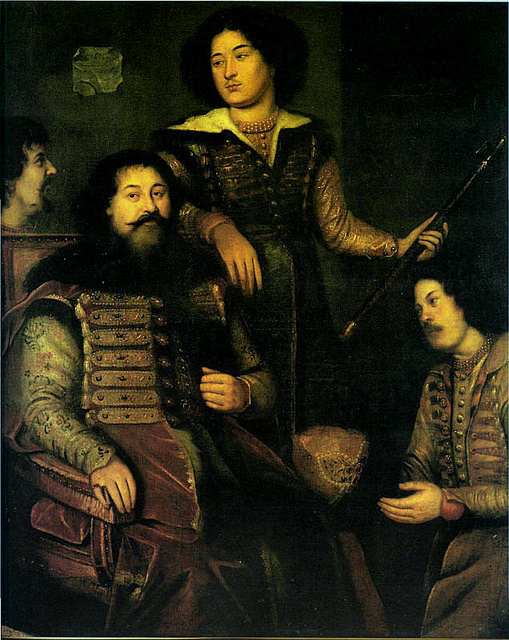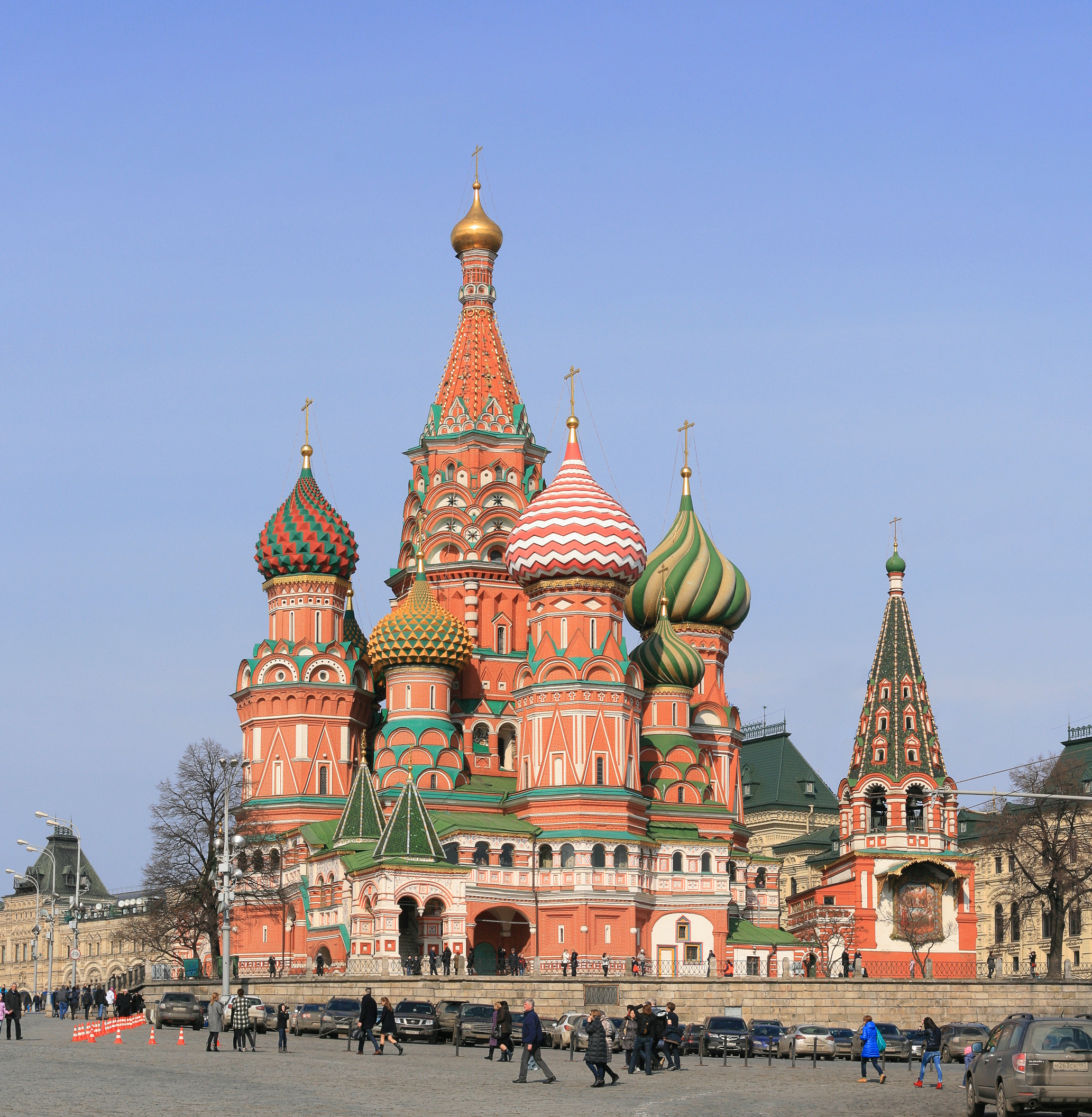|
Prozorovsky
The House of Prozorovsky () were a Russian nobility, Russian noble family descending from medieval rulers of Yaroslavl and Mologa and eventually the Rostislavichi of Smolensk. Their name is derived from the village of Prozorovo near Mologa, which used to be their only votchina in the 15th century. History During the Grand Duchy of Moscow, Muscovite period of Russian history, the most eminent member of the family was Prince Ivan Semyonovich Prozorovsky, a boyar's son and boyar himself, who happened to govern Astrakhan at the time of Stenka Razin's uprising. When the rebels took the city, they had him defenestrated from a kremlin tower. His little son was hung upside down on the city wall (1670). Ivan's inglorious death only added to the family standing, and six of his nephews became boyars during the early reign of Peter I of Russia, Peter the Great. Prince Ivan Andreyevich Prozorovsky, an Elizabeth of Russia, Elizabethan general-in-chief, helped launch the military career of h ... [...More Info...] [...Related Items...] OR: [Wikipedia] [Google] [Baidu] |
Alexander Prozorovsky
Prince Alexander Alexandrovich Prozorovsky (, Romanization of Russian, tr. ; 1733 – 21 August 1809) was the only Field Marshal from the Prozorovsky, Prozorovsky family. Biography Prozorovsky gained distinction in the Seven Years' War and the Russo-Turkish War, 1768-1774, conquest of Crimea. Prozorovsky's career was furthered by his maternal House of Golitsyn, Galitzine relatives, who helped him to get appointed to the office of Kursk's governor in 1780. He resigned two years later and spent the following years at his country estates. In 1790 Prozorovsky returned to the active service as the Governor General of Moscow. Emperor Paul, however, couldn't get along with him and discharged Prozorovsky from his office. His ancient services were recalled in 1808, when the Russian army Russo-Turkish War, 1806-1812, resumed its hostilities against Turkey, and Prozorovsky became its Commander-in-Chief. Prozorovsky's reputation suffered a blow when his attempt to storm of Brăila, Brailo ... [...More Info...] [...Related Items...] OR: [Wikipedia] [Google] [Baidu] |
Alexander Suvorov
Count Alexander Vasilyevich Suvorov-Rymniksky, Prince of Italy () was a Russian general and military theorist in the service of the Russian Empire. Born in Moscow, he studied military history as a young boy and joined the Imperial Russian Army at the age of 17. Promoted to colonel in 1762 for his successes during the Seven Years' War, his victories during the War of the Bar Confederation included the capture of Kraków and victories at Battle of Orzechowo, Orzechowo, Battles of Lanckorona#Third clash (Battle of Lanckorona), Lanckorona, and Battle of Stołowicze, Stołowicze. His reputation rose further when, in the Russo-Turkish War (1768–1774), Russo-Turkish War of 1768–1774, he Stormings of Turtucaia, captured Turtukaya twice and won a decisive victory at Battle of Kozludzha, Kozludzha. After a period of little progress, he was promoted to general and led Russian forces in the Russo-Turkish War (1787–92), Russo-Turkish War of 1787–1792, participating in the Siege o ... [...More Info...] [...Related Items...] OR: [Wikipedia] [Google] [Baidu] |
Mologa
Mologa () was a town in Yaroslavl Oblast, Russia, formerly situated at the confluence of the rivers Mologa and Volga, but now submerged under the waters of the Rybinsk Reservoir. Mologa existed at least since the 12th century. It was a part of the Principality of Rostov in the early 13th century. Later on, the town was annexed by the Principality of Yaroslavl. In 1321, it became the center of an independent principality. Soon after that, Ivan III annexed Mologa in favor of the Muscovy. Thereupon Mologa's rulers moved to Moscow, where they have been known as Princes Prozorovsky and Shakhovskoy. In the late 15th century, they relocated a fair from Kholopiy Gorodok (a town 55 km north of Mologa) to Mologa. After that, Mologa turned into one of the most important Russian trade centers with the Asian countries. According to an account by Sigismund von Herberstein, there was a fortress in Mologa. Following the Time of Troubles, Mologa thrived as a trade ''sloboda''. In the 19t ... [...More Info...] [...Related Items...] OR: [Wikipedia] [Google] [Baidu] |
Stenka Razin
Stepan Timofeyevich Razin (, ; c. 1630 – ), known as Stenka Razin ( ), was a Don Cossack leader who led a major uprising against the nobility and tsarist bureaucracy in southern Russia in 1670–1671. Early life Razin's father, Timofey Razya, supposedly came from a suburb of Voronezh, a city near Russia's steppe frontier, called the Wild Fields. Razin's uncle and grandmother still lived in the village of ''New Usman or ''Usman' Sobakina'', outside of Voronezh, until 1667. The identity of Razin's mother is debated. In one document, Razin was referred to as a ''tuma Cossack'' which means "half-blood", leading to a hypothesis that his mother was a captured "Turkish" (''turchanka'') or Crimean Tatar woman. However, this term was also used by "upper Cossacks" as a derogatory nickname towards all "lower Cossacks" regardless of origin. Another hypothesis draws on information about Razin's godmother Matrena Govorukha. According to tradition, a godmother should be related to a bi ... [...More Info...] [...Related Items...] OR: [Wikipedia] [Google] [Baidu] |
RU COA Prozorovsky I, 11
Ru, ru, or RU may refer to: Russia * Russia (ISO 3166-1 alpha-2 country code) * Russian language (ISO 639 alpha-2 code) * .ru, the Internet country code top-level domain for Russia China * Rù (入), the entering tone in Chinese language phonetics * Rú (儒), a Chinese language term for Confucianism * Ru (surname) (茹), a Chinese surname * Ru River (汝), in Henan, China * Ru ware, a type of Chinese pottery Educational institutions * Rajasthan University in Rajasthan, India * Radboud University Nijmegen, in Nijmegen, Netherlands * Radford University, in Virginia, USA * Rai University in Gujarat, India * Rajshahi University in Bangladesh * Rama University in India * Ramkhamhaeng University in Thailand * Rangoon University in Burma * Regis University in Colorado, USA * Reykjavík University Iceland * Rhodes University in Grahamstown, South Africa * Rockefeller University in New York, USA * Rockhurst University in Missouri, USA * Roosevelt University in Chicago, Illinois, ... [...More Info...] [...Related Items...] OR: [Wikipedia] [Google] [Baidu] |
House Of Golitsyn
The House of Golitsyn (, ) is the second largest and noblest Princely house in Russia.Jean-Marie Thiébaud , A great princely family of Russia, the Galitzines. Genealogy and historical notes , Paris, 1997. Among its members were warlords, landlords, knyazes (princes), knights, diplomats, Prime Ministers, admirals, stewards, State Counsellors and statesmen. The Golitsyns claim their seniority in the Lithuanian dynasty of Gediminas (the Gediminids) which has existed since the 13th century. Descendants of this family in Europe and the west write their name in the form '' Galitzine''. The family is among the first Russian aristocratic dynasties and its members bear the honorific predicate His Serene Highness.Alexandre Galitzine, ''The Princes Galitzine,'' Washington DC, Victor Graphics,2002 The family produced many well-known statesmen and figures of the Russian Empire, among them notably Vasily, Boris, Dmitry and Nikolai Golitsyn, the last chairman of the Council o ... [...More Info...] [...Related Items...] OR: [Wikipedia] [Google] [Baidu] |
Emperor Nicholas I
Nicholas I, group=pron (Russian language, Russian: Николай I Павлович; – ) was Emperor of Russia, List of rulers of Partitioned Poland#Kings of the Kingdom of Poland, King of Congress Poland, and Grand Duke of Finland from 1825 to 1855. He was the third son of Paul I of Russia, Paul I and younger brother of his predecessor, Alexander I of Russia, Alexander I. Nicholas's thirty-year reign began with the failed Decembrist revolt. He is mainly remembered as a reactionary whose controversial reign was marked by geographical expansion, centralisation of administrative policies, and repression of dissent both in Imperial Russia, Russia and among its neighbors. Nicholas had a happy marriage that produced a large family, with all of their seven children surviving childhood. Nicholas's biographer Nicholas V. Riasanovsky said that he displayed determination, singleness of purpose, and an iron will, along with a powerful sense of duty and a dedication to very hard work. ... [...More Info...] [...Related Items...] OR: [Wikipedia] [Google] [Baidu] |
Moscow
Moscow is the Capital city, capital and List of cities and towns in Russia by population, largest city of Russia, standing on the Moskva (river), Moskva River in Central Russia. It has a population estimated at over 13 million residents within the city limits, over 19.1 million residents in the urban area, and over 21.5 million residents in Moscow metropolitan area, its metropolitan area. The city covers an area of , while the urban area covers , and the metropolitan area covers over . Moscow is among the world's List of largest cities, largest cities, being the List of European cities by population within city limits, most populous city entirely in Europe, the largest List of urban areas in Europe, urban and List of metropolitan areas in Europe, metropolitan area in Europe, and the largest city by land area on the European continent. First documented in 1147, Moscow became the capital of the Grand Principality of Moscow, which led the unification of the Russian lan ... [...More Info...] [...Related Items...] OR: [Wikipedia] [Google] [Baidu] |
Seven Years' War
The Seven Years' War, 1756 to 1763, was a Great Power conflict fought primarily in Europe, with significant subsidiary campaigns in North America and South Asia. The protagonists were Kingdom of Great Britain, Great Britain and Kingdom of Prussia, Prussia versus Kingdom of France, France and Habsburg monarchy, Austria, the respective coalitions receiving by countries including Portuguese Empire, Portugal, Spanish Empire, Spain, Electorate of Saxony, Saxony, Age of Liberty, Sweden, and Russian Empire, Russia. Related conflicts include the Third Silesian War, French and Indian War, Carnatic wars, Third Carnatic War, Anglo-Spanish War (1762–1763), Anglo-Spanish War (1762–1763), and Spanish–Portuguese War (1762–1763), Spanish–Portuguese War. Although the War of the Austrian Succession ended with the Treaty of Aix-la-Chapelle (1748), none of the signatories were happy with the terms, and it was generally viewed as a temporary armistice. It led to a strategic realignment kn ... [...More Info...] [...Related Items...] OR: [Wikipedia] [Google] [Baidu] |
Field Marshal
Field marshal (or field-marshal, abbreviated as FM) is the most senior military rank, senior to the general officer ranks. Usually, it is the highest rank in an army (in countries without the rank of Generalissimo), and as such, few persons are ever appointed to it. It is considered as a five-star rank (OF-10) in modern-day armed forces in many countries. Promotion to the rank of field marshal in many countries historically required extraordinary military achievement by a general (a wartime victory). However, the rank has also been used as a Division (military), divisional command rank and as a brigade command rank. Examples of the different uses of the rank include Afghanistan, Austria-Hungary, India, Pakistan, Prussia/Germany and Sri Lanka for an extraordinary achievement; Spain and Mexico for a divisional command (); and France, Portugal and Brazil for a brigade command (, ). Origins The origin of the term dates to the early Middle Ages, originally meaning the keeper of t ... [...More Info...] [...Related Items...] OR: [Wikipedia] [Google] [Baidu] |





